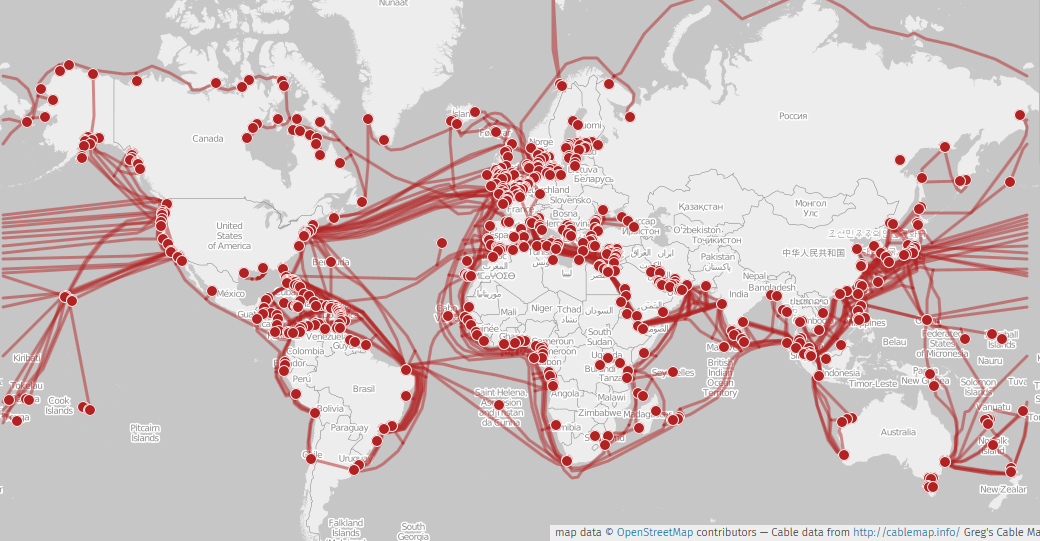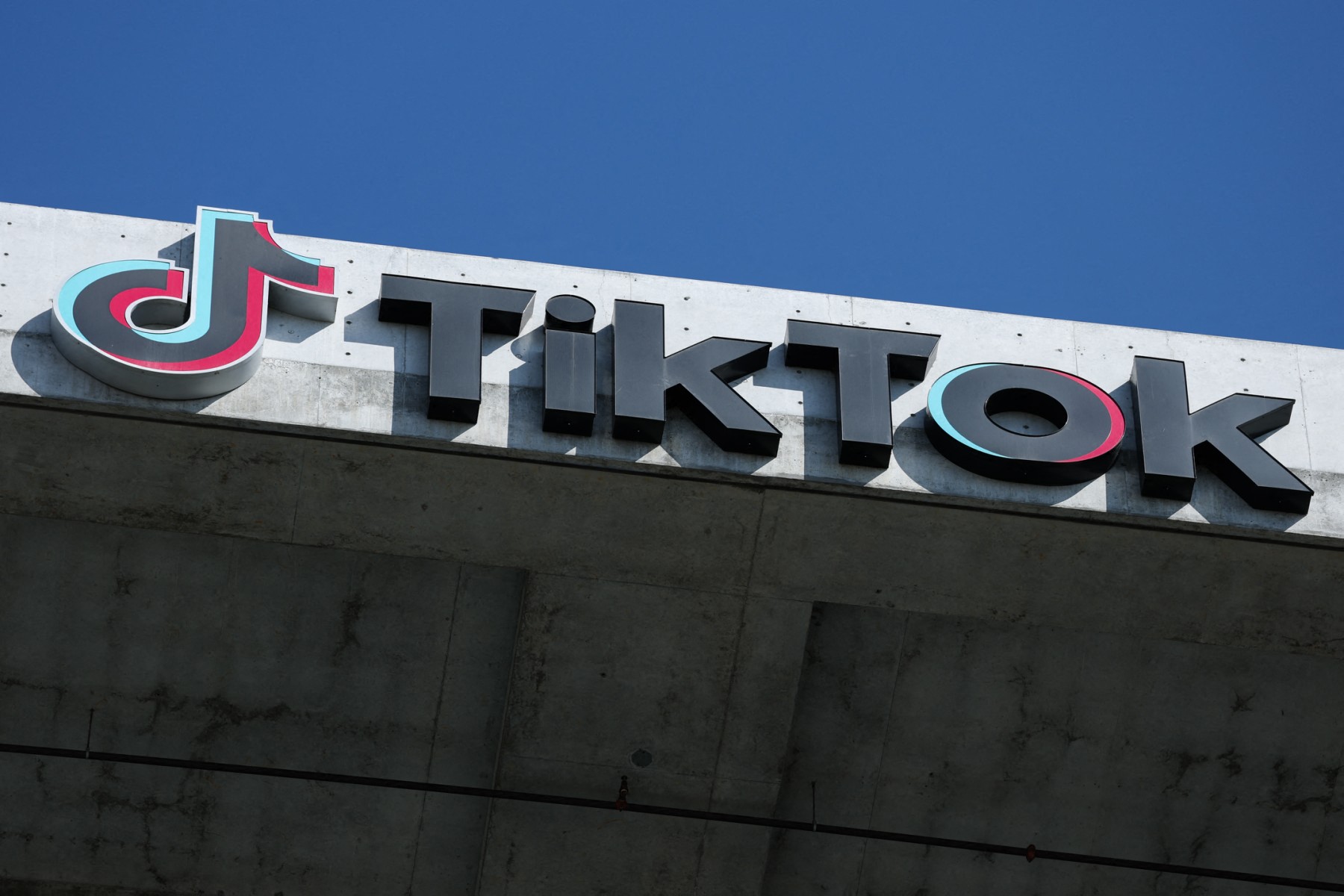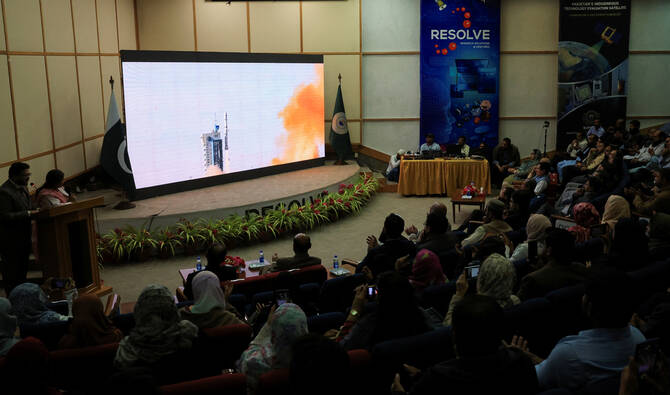
Wikimedia commons file photo - Submarine cable map
ISLAMABAD: Millions across Pakistan have recently faced significant internet disruptions, exposing the fragility of both national and international digital infrastructure.
These outages highlight the global reliance on a limited network of subsea cables and data lines to support modern economies and facilitate global communication.
Why does this happen?
The root causes are often damage to undersea cables, power failures in data centres, or congestion in routing networks. Around 300 subsea cables carry 99% of transoceanic data traffic, according to AP research. These cables, vulnerable to ship anchors, earthquakes, or sabotage, are the backbone of global telecommunication.
In February 2025, cable cuts in the Red Sea caused widespread internet disruptions, affecting countries across Asia, Africa, and the Middle East, including Kenya, Mozambique, Pakistan, Tanzania, and the United Arab Emirates. A September 2025 AP report noted that experts highlighted the vulnerability of these cables, estimating that up to 70% of Europe–Asia data flow was disrupted.
Cyberattacks and shutdowns
Cyberattacks, government-imposed shutdowns, and infrastructure failures have also been increasing. Context News, a Thomson Reuters Foundation project, reported 296 shutdowns in 54 countries, disrupting communications, posing economic challenges, and restricting access to essential services.
Last year, Reuters reported that severe heatwaves in Southern Europe triggered power grid failures, shutting down data centres and damaging telecom and financial sectors.
Impact on Pakistan’s IT sector
The Sustainable Development Policy Institute, a non-profit research organization based in Pakistan, reported a decline in internet quality. Pakistan ranks 79th globally in the Inclusive Internet Index, with poor scores in infrastructure (34) and performance (31). The country ranks seventh in South Asia on the Internet Resilience Index, ahead of only Iran and Afghanistan.
Recent disruptions in Pakistan have been caused by malfunctions in critical cables, including the AAE-1 cable and the SMW-4 cable (1.5T), as reported by the Pakistan Telecommunication Authority (PTA). Similarly, Pakistan Telecommunication Company Ltd (PTCL) reported outages from damage to two undersea cables: FLAG and SEA-ME-WE 4.
Pakistan is heavily dependent on vulnerable undersea cables, linked to international networks via SEA-ME-WE 3, SEA-ME-WE 4, TWA1, and FLAG cables. In 2024, one cable was damaged near Alexandria, Egypt, and another near Marseille, France. These cables, managed and operated separately, were damaged within hours of each other, highlighting Pakistan’s reliance on fragile infrastructure.
PTCL has confirmed that traffic into the country is now being rerouted through limited backup cables, causing slower speeds and increased latency nationwide.
Digital Rights Monitor reported in October 2025 that experts pointed out the significant impact of such disruptions on Pakistan’s digital economy, including e-commerce and remote work. The Pakistan Software Export Board (PSEB) stated, "connectivity issues directly affect the credibility of Pakistan's IT workforce in the global market."
Business setbacks and economic fallout
Internet disruptions carry substantial economic costs. A Deloitte report found that a one-hour outage can cost major economies like the United States or Germany over $100 million in lost revenue.
A Cisco survey found that 82% of firms in the Philippines experienced digital outages, contributing to an estimated global loss of $160 billion annually. Top10VPN, a digital privacy firm, estimated that internet shutdowns across Asia in 2024 resulted in a total loss of $4.64 billion.
The World Economic Forum noted that internet reliability has become a key factor in attracting investment, especially in developing countries seeking IT outsourcing.
Restoration and global investment
Repairing undersea cables is a complex, time-consuming process. According to the International Cable Protection Committee, repairs can take 7 to 20 days, depending on weather conditions and vessel availability. Specialized ships must locate, remove, and repair damaged fiber—operations that cost millions of dollars.
Governments and telecom operators are increasing spending to mitigate the risks of future disruptions. The World Bank predicts that investments in submarine and terrestrial fibre networks will reach $32 billion in 2024, a 19% rise from 2022.
The European Commission’s Digital Connectivity Act is aiming to develop multi-route 5G corridors, while the Federal Communications Commission (FCC) in the United States has established a $42 billion Broadband Equity Fund to improve redundancy.
Latest News
North Korea uses crypto, IT workers to evade sanctions: report
2 HOURS AGO

PM Sharif to lead Pakistan delegation to Saudi Arabia for Future Investment Initiative
4 HOURS AGO

In Peshawar, Afghani burger and Mantu keep refugee traditions alive
5 HOURS AGO

Year-long funeral starts for Thailand's former queen Sirikit
5 HOURS AGO

EU accuses Meta, TikTok of breaking digital content rules
7 HOURS AGO



